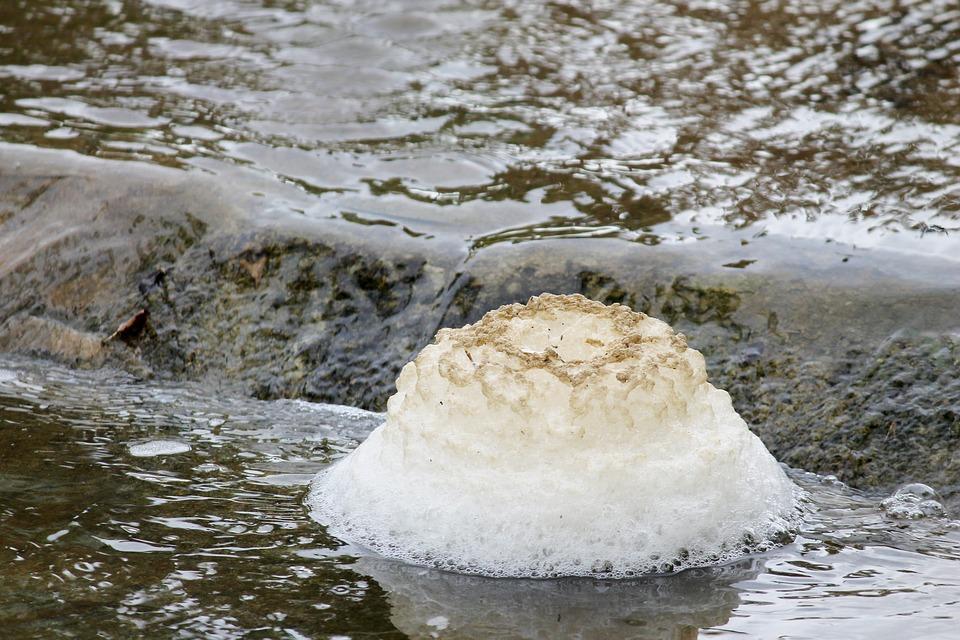|
Large tufts of off-white shaving cream floated down Penns Creek in sporadic clumps. They darted around exposed rocks, swirling briefly in a whirlpool within an eddy line before being sucked into the main current and swiftly carried farther downstream. Of course, the foamy clusters were not shaving cream, but seemed equally out of place on the creek. It is no surprise that since my acceptance of the Middle Susquehanna Riverkeeper position, no water-based phenomenon has led to more calls and emails from watershed residents than foam on the water. Several years ago, when my family first moved along the Penns Creek, I was equally perplexed by the bobbing foam patches that would sporadically appear on the waterway – usually in the spring and fall. Research suggested, however, that in most cases, they are caused naturally. Various organic castoffs from aquatic and plant life skims along the top of the water, gets whipped around by a series of rapids, wind and other variables, and ultimately forms a frothy foam. “It is pretty common this time of year due to lots of rain and wind,” said Dr. Jon Niles, of the Freshwater Institute at Susquehanna University. “The color and size of bubbles are dependent on the various make-up of the organic matter, wind speed and the tumbling over rocks.” The organic matter, which can include fatty, wax-like molecules called lipids along with certain proteins and plant-based compounds, acts very much like egg white when beaten thoroughly with an electric mixer or hand-powered whisk. In fact, that object lesson is at the core of a recent Study the Susquehanna video available at the Middle Susquehanna Riverkeeper YouTube channel. I whipped up some sugar-free meringue and floated a few spoonfuls of the foamy mixture on a tub of water. It is important to note, however, that not all river-based foam is created equal. Some, despite its odd appearance, is completely natural. Other forms, however, can be an important red flag for possible manmade pollution. “Foam produced from natural formation is identified by its off-white color and usually has an earthy or even fishy odor,” Niles said. “It usually picks up various shades of tan or brown due to other organic materials.” Among those compounds is tannin – a substance that can be found in the bark, wood, fruit, leaves, flowers and roots of most plant species and is used in the tanning of animal hides into leather. “Human-made foam tends to smell fragrant – like from a detergent – or unpleasant (sanitary sewer or septic field failures) and be more white in color,” Niles said. Also, foams that may have different colors could indicate issues, specifically hues that aren’t really natural, such as pink or blue. If you witness foam along our waterways that falls into these less-than-natural categories, it is recommended you reach out to the Middle Susquehanna Riverkeeper Association via phone (570-768-6300) or email (midsusriver@gmail.com). Make sure to include the location and conditions the foam was found in and submit any photos or video of your findings.
2 Comments
Mark Dunkle
9/1/2023 05:54:46 am
Seeing clumps of white foam floating down Little Pine Creek below the English Center iron bridge. Is this pollution or natural? My cabin is along this creek. Date is 9-1-2023
Reply
Leave a Reply. |
AuthorsRiverkeeper John Zaktansky is an award-winning journalist and avid promoter of the outdoors who loves camping, kayaking, fishing and hunting with the family. Archives
April 2024
Topics |

 RSS Feed
RSS Feed